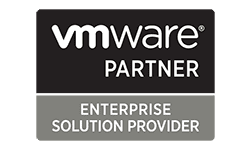What Is IT Infrastructure?
Information Technology Infrastructure: The combined components needed for the operation and management of enterprise IT environments.
Editorial Team
5 Min Read
Information technology infrastructure, or IT infrastructure, refers to the combined components needed for the operation and management of enterprise IT services and IT environments. Technology infrastructure creates a network to enhance communication, efficiency, and productivity. The right IT components, deployment, and management enable enterprises to meet their goals. With IT infrastructure, enterprises can better serve their customers, bring their products to market, and grow.
IT Infrastructure Service Components
IT components are the basis of technology infrastructure. These connections are interdependent, working together to improve communication between devices. Several options for implementation, organization, and deployment exist for components in an information technology infrastructure.
The components of IT infrastructure are made up of interdependent elements. IT infrastructure components fit into the following categories.

Hardware
Hardware refers to physical components and devices that organize and deliver the IT infrastructure. Hardware is the infrastructure’s foundation — IT infrastructure could not exist without hardware components.
Examples of hardware components include:
- Smartphones and mobile devices
- Tablets
- Desktop computers
- Laptop computers
- Data centers
- Servers
- Internet routers
- Internet hubs
- Switches
- Facilities
Software
Software components are the programs and applications that provide services and operate internal pipelines. Software also runs the operating systems that these programs and applications are installed on. If the hardware is the machine in the infrastructure, the software is the interface operators can use to control it.
While millions of software options exist for IT infrastructures, the most common software components include:
- Operating systems
- Content management systems (CMS)
- Enterprise resource planning (ERP)
- Custom software
- Customer relationship management (CRM)
- Web servers
- Security analytics software
Networks
Network components combine the hardware and software components. The network establishes internet access, configuration management, integrated security monitoring, device access management, and other services. Security firewalls protect the network from breaches and malware.
Typical network components include:
- Switches to connect devices on local area networks (LAN).
- Data centers to house all the physical servers in one place.
- Routers to enable devices on different LANs to communicate.
- Servers to enable multiple users to share and access common resources.
- Hubs to connect multiple networking devices to function as one component.
Types of IT Infrastructure
Hardware, software, and network components comprise the standard technology infrastructure. The company using the infrastructure can store the physical components and manage the network within. Another increasingly popular option is to allow the storage and management of this infrastructure to occur in the cloud.
Traditional and cloud-based IT infrastructures both offer unique benefits.
Traditional
In a traditional infrastructure, the physical components are stored in and managed from one facility. The traditional option is common for on-premises private use. This deployment site needs:
- The physical space to house the equipment.
- Adequate power to operate the components.
- A team with the knowledge to monitor, manage, and troubleshoot the infrastructure.
The traditional infrastructure is safe for data storage since the enterprise can manage data and software itself. It is also beneficial for enterprises that need to quickly update to new technology or implement several types of software.
Cloud-Based
Cloud-based infrastructure is a new option that relies on a cloud service provider to support the infrastructure. With the servers, software, and data in the cloud, a third party manages the infrastructure, requiring no on-premises storage space or management.
Users can access cloud-based infrastructure through the internet from several kinds of devices in virtually any location. The service provider connects the device to the server, allowing team members to access information. Cloud-based infrastructure alleviates the pressure on internal IT resources, facility space, and funds.
What Is IT Infrastructure Management?
As computers have become a critical component in the business model, IT organizations use methods, frameworks, and best practices to manage IT infrastructure. Various management areas have emerged to maximize the value of IT assets.
IT infrastructure management includes the following primary practices.
IT Operational Management
IT operational management (ITOM) refers to the tools and processes that operate and maintain the infrastructure. ITOM aims to make the infrastructure more reliable, available, and efficient for the enterprise. Policies determine the service and support for IT infrastructure, such as how issues will be resolved.
ITOM uses these functions to track IT infrastructure health in real time:
- Operational analysis
- Operational intelligence
- Network asset discovery
- Data collection
- Network event management
- Orchestration
- Cloud management
IT Service Management
IT service management (ITSM) combines the operations that design, create, deliver, support, and manage the life cycle of IT services. ITSM addresses the need to align the IT organization’s services to the enterprise’s needs.
ITSM includes the activities needed to enable and maintain the deployment, management, and operation of IT resources in the enterprise. Another aspect of ITSM is overseeing the activities required to manage IT services throughout its life cycle. The life cycle includes:
- The strategic decision to implement a service.
- Service design
- Service creation
- Service deployment
- Service operation
IT Asset Management
IT asset management (ITAM) is used for the operations that manage the infrastructure’s life cycle, including hardware and software solutions. The goal of ITAM is to optimize the purchase, utilization, and end-of-life disposal of IT assets.
ITAM uses these disciplines to achieve its goals:
- Financial: ITAM optimizes expenses for the infrastructure. New infrastructure purchases must provide the best value for their cost to justify the investment and recover the costs when the asset is disposed of at the end of its life.
- Inventory: ITAM controls the infrastructure by keeping an inventory of IT assets. The inventory allows IT organizations to make informed purchasing decisions when adding to the infrastructure.
- Contractual: ITAM oversees the management of the license agreements for software components and cloud services. The goal is to reduce waste by identifying unused licenses and maintaining compliance with the service contracts.
Networking and Infrastructure Services From GDC
GDC offers networking and infrastructure services enterprises can count on. Our experts will assess your network and infrastructure to identify inefficiencies. We will tailor our strategy to your specific needs through services such as:
- Network administration
- Vulnerability scanning and management
- Server and storage utilization
- Data backup system management
Contact GDC to request a quote or speak with one of our specialists today.




